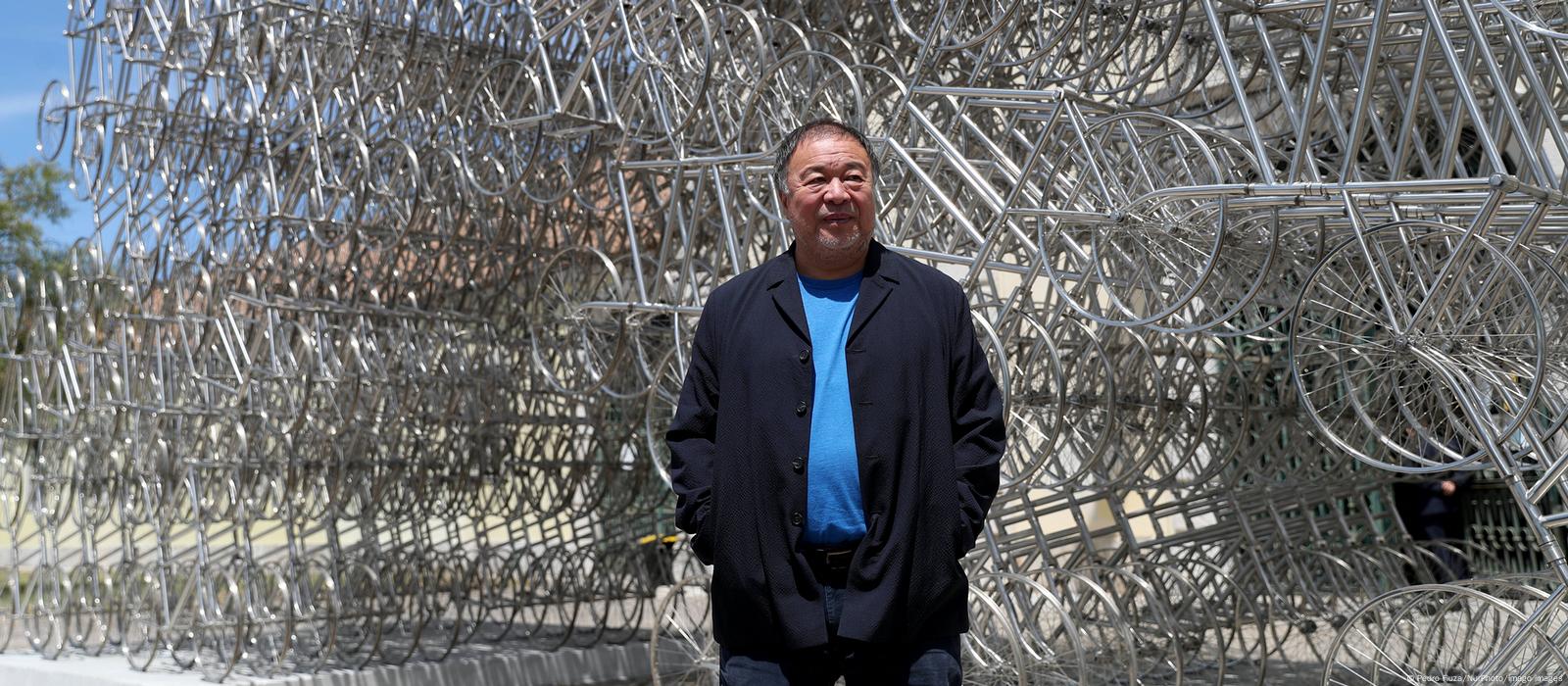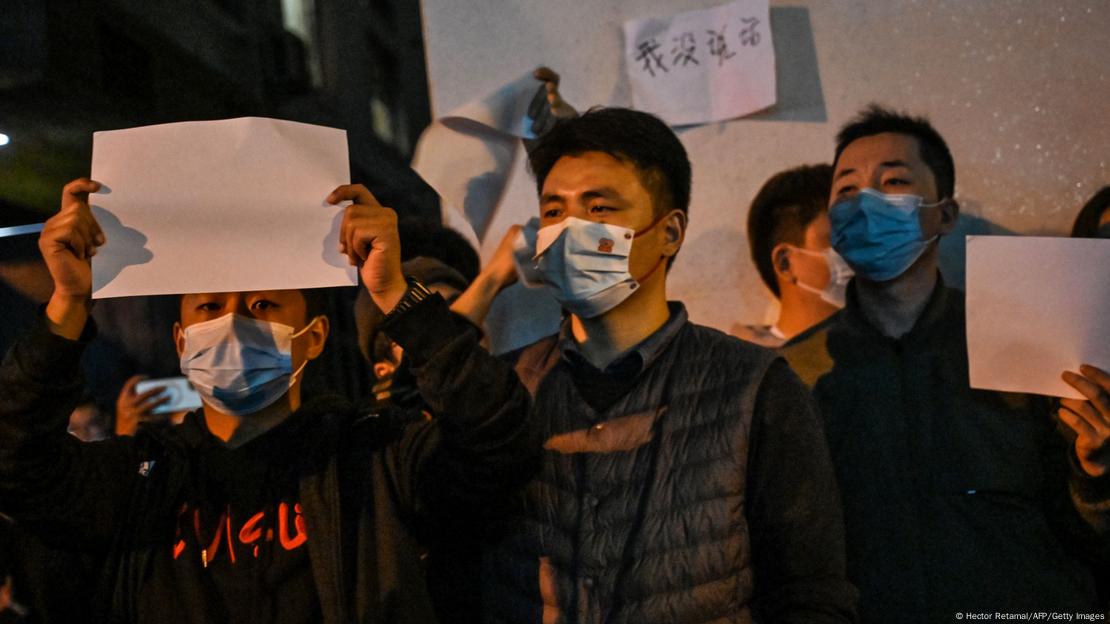
FREEDOM OF SPEECH CHINA
Ai Weiwei on China's protests
Stefan Dege
12/02/2022
December 2, 2022
DW spoke to Chinese artist and dissident Ai Weiwei about the protests in China against extreme pandemic lockdowns.
DW spoke to Chinese artist and dissident Ai Weiwei about the protests in China against extreme pandemic lockdowns.
Renowned Chinese artist and dissident Ai Weiwei, who currently lives in Portugal with his Chinese wife and their child, sees China's reaction to the pandemic over the past three years as the "most stringent constraints on human behavior in Chinese history and in human history," which are restricting human rights and personal autonomy, he told DW in an email interview.
Ai added that the protests in many Chinese cities against the strict lockdowns were "gatherings of resistance" where protest slogans were chanted. "People mostly want to be released from confinement," the artist said, "and go back to their normal life."

Protests in Guangzhou against China's "zero-COVID" restrictions
Image: REUTERS
Though there has been a careful easing of "zero-COVID" pandemic measures in the city of Guangzhou, the artist does not believe the protests will have a lasting effect. "Any type of protests in China can hardly be successful because the Party [the country's sole ruling party, the Chinese Communist Party] considers themselves as representative of the interests of people," Ai wrote, "so for them there is no such thing as people's protests against them."
Sheet of paper as the most important expression of protest
Ai wrote that the protesters do not yet have any leaders, nor are they supported by any organizations. They also have no agenda, according to Ai: "As we say in a Chinese idiom, it is like a plate of loose sand."
The white sheets of paper held by protesters serve as their most important ideological expression, according to Ai, who sees the blank signs as "a very strong symbol" representing the protesters' desire to express themselves freely.
Though there has been a careful easing of "zero-COVID" pandemic measures in the city of Guangzhou, the artist does not believe the protests will have a lasting effect. "Any type of protests in China can hardly be successful because the Party [the country's sole ruling party, the Chinese Communist Party] considers themselves as representative of the interests of people," Ai wrote, "so for them there is no such thing as people's protests against them."
Sheet of paper as the most important expression of protest
Ai wrote that the protesters do not yet have any leaders, nor are they supported by any organizations. They also have no agenda, according to Ai: "As we say in a Chinese idiom, it is like a plate of loose sand."
The white sheets of paper held by protesters serve as their most important ideological expression, according to Ai, who sees the blank signs as "a very strong symbol" representing the protesters' desire to express themselves freely.

Blank papers have become a popular way to protest China's zero-COVID policyImage: Hector Retamal/AFP/Getty Images
A blank page aimed at the global public
According to Berlin-based art historian and political iconography expert Michael Diers, the blank sheet of paper is a "relatively new invention" and also an "admirably brave and imaginative" means of protest.
Among the first to go viral, the photo of an Russian anti-war protester in Nizhny Novgorod who was holding a blank sheet of paper and subsequently detained by police made international headlines in March this year. "A symbol like the blank placard arises when all other attempts at protest have previously failed," Diers told DW. The action is always aimed at the cameras, he says, and is always addressed towards the global public. "It's about the power of images."

Michael Diers, art historian and media expert
Image: privat
According to Ai, the blank sheet of paper stands for wordlessness and resistance against the restricting of freedom of expression.
Ai is not surprised by the absence of representatives from the cultural sector alongside the Chinese protesters. "Usually, artists and writers are all advocates of liberalism," who would be on the side of the demonstrators "by default," he wrote. "But, as the regime in China muzzles freedom of expression, no matter who stands next to protesters," Ai wrote, "they cannot be seen."
This article was originally written in German.
According to Ai, the blank sheet of paper stands for wordlessness and resistance against the restricting of freedom of expression.
Ai is not surprised by the absence of representatives from the cultural sector alongside the Chinese protesters. "Usually, artists and writers are all advocates of liberalism," who would be on the side of the demonstrators "by default," he wrote. "But, as the regime in China muzzles freedom of expression, no matter who stands next to protesters," Ai wrote, "they cannot be seen."
This article was originally written in German.
No comments:
Post a Comment